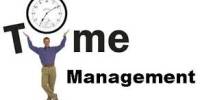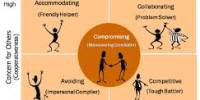Planning is the integral part of managers job. Managers finds difficulties if there is uncertainties in the planning horizon. Forecast helps manager to reduce the uncertainties thereby (in that way) enabling them to develop more meaningful and effective plan. A forecast is a statement about the future value of a variable such as demand. Forecasting is one input to all types of business planning and control both inside and outside the operations function.
To make forecasts People may take into account two kinds of information. One is current factors or conditions other is past experience in a similar situation. Forecasting presents an unresolved philosophical dilemma. You can never plan the future by the past. Forecasts affect decisions and activities throughout an organization, in accounting, Finance, Human resources, marketing, MIS, as well as operations.
Demand forecasts in business organization lies with marketing or sales rather than operations. Operations – generated forecasts often have to do with inventory requirements, resources needs, time requirements and the like.
Operation managers try to forecast a wide range of future events that potentially affect success. Forecasting is concern demand for products and services.
Elements of a good forecast
- The forecast should be timely: Usually, a certain amount of time is needed to respond to the information contained in a forecast. Time necessary to implement necessary change.
- The forecast should be accurate and the degree of accuracy should be stated. This will enable users to plan for possible errors and will provide a basis for comparing alter native forecast.
- The forecast should be reliable: It should work consistently. A technique that sometimes provides a good forecast and sometimes a poor but should be reliable.
- The forecast should be expressed in meaningful units: Units depends on user needs. For example: Production planners need to know how many units will be needed.
- The forecast should be in writing: A written forecast will permit an objective basis for evaluating the forecast.
- The forecasting technique should be simple to understand and use: Fairly simple forecasting techniques enjoy widespread popularity because of users are more comfortable working with them.
Steps in the forecasting process
There six basic steps in the forecasting process:
- Determine the purpose of the forecast: How will it be used and when will it be needed? Detailed level of requirement needed and that can be justified and the level of accuracy necessary.
- Establish a time horizon: The forecast must indicate a time interval, keeping in mind that accuracy decreases as the time horizon increases.
- Select the forecasting: Which forecasting is essential for particular purpose should be identified and select.
- Gather and analyze relevant data: Before a forecast can be made, data must be gathered and analyzed. Identify any assumptions that are made in conjunction with preparing and unsung the forecast.
- Make the forecast: After performing the above element make forecast.
- Monitor the forecast: A forecast has to be monitored to determine whether it is performing in a satisfactory manner. If it is not reexamine the method, assumption, validity of data and so one; modify as needed; and prepare a revised forecast.
Approaches to forecasting
There are to general approaches to forecasting:
- Qualitative
- Quantitative
Qualitative: This method consist of subjective inputs which often precise numerical description. It permits inclusion of soft information (human factors, personal opinions, hunches (guess or feelings). These factors are often omitted because they are difficult or impossible to quantify. (Count)
Quantitative: This method involves either the projection of historical data or the development of associative models that attempt to utilize casual (explanatory) variables to a forecast. This technique consists mainly of analyzing objective or hard data. They usually avoid personal biases that sometimes contaminate qualitative methods. In practice either or both approaches might be used to develop a forecast.
There are varieties of forecasting techniques that are classified as
- Judgment forecast
- Time series forecasts
- Associative models
Judgment forecast rely on analysis of subjective inputs obtained from various sources such as consumer surveys, the sales staff, managers, executives and panels of experts.
Time series forecasts simply attempt to project past experience into the future. These techniques use historical data with the assumption that the future will be like the past. Some models merely attempt to smooth out random variations in historical data. This pattern identified in recent time series observation.
Associative models use questions that consist of one or more explanatory variables that can be used to predict future demand
Materials requirements planning (MRP)
Manufacturing organizations required to deal with complexity because of nemours production, parts and uncertainties. The typical manufacturing companies may have many products and parts to manage, shifting priorities and unpredictable demand. It is possible to manage through use of a computerized planning and control system called Materials requirements planning (MRP)
MRP is a planning and scheduling technique used for batch (lot, group) production of assembled (bring together) items.
The raw materials, purchased parts, and other components of assembled items are subject to dependent demand which requires an approach different from inventory management.
MRP drives from the distinction of independent demand and dependent demand.
Independent demand inventories are subject to market conditions. Finished goods, spare parts in manufacturing companies that are used to satisfy the final customers demand.
On the other hand Dependent demand inventories are not subject to market conditions it includes raw materials and work in process. to support the manufacturing process it self. Dependent demand inventories that are component parts to be used in the production of finished goods.
An MRP system is driven by the master Schedule, which specifies the out put of production function. All future demands for work in process and raw materials are depend on the master schedule and driven by the MRP system. When raw materials and work in process inventories are planned, all past history of demand is irrelevant unless the future is exactly the as past. Since conditions are usually changing, the master schedule is far a better basis than past demand for planning raw materials and work in process inventories.
Master production schedule, which is determined by customer’s orders, aggregate production planning, and forecasts of future demand.
The master schedule refers to as the master production schedule, states which end items are to be produced, when they are needed and in what quantities.
The bill of materials: (BOM) it contains a listing of all of the assemblies, sub assemblies, parts, and raw materials that are needed to produce one unit of a finished product. Thus, each finished product has its own bill of materials.
Inventory records refer to stored information on the status of each item by time period called time buckets. It includes gross requirements, scheduled receipts, and expected amount on hand. It also includes other details for each item, suck as supplier, lead time, and size policy. Changes due to stock receipts and withdrawals, canceled orders and similar events also are recorded in this file.
Benefits and requirements of MRP
Benefits: MRP offers a number of benefits for the typical manufacturing or assembly type of operation, including
- Low levels of in process inventories
- The ability to keep track of material requirements
- The ability to evaluate capacity requirements generated by a given master schedule
- a means of allocating production time
Requirements In order to implement and operate an effective MRP system, it is necessary to have
- A computer and necessary software programs to handle computation and maintain records
- Accurate and up to date:
- Master schedules
- Bills of materials
- Inventory records
- Integrity of file data.
Accuracy is absolutely essential for a successful MRP system. Inaccuracies in inventory record files or bills of materials files can lead to unpleasant surprise, ranging from missing parts to ordering too many of some items and too few of others, and failure to stay on schedule, all of which contribute to inefficient use of resources, missed delivery dates, and poor customer service.
















